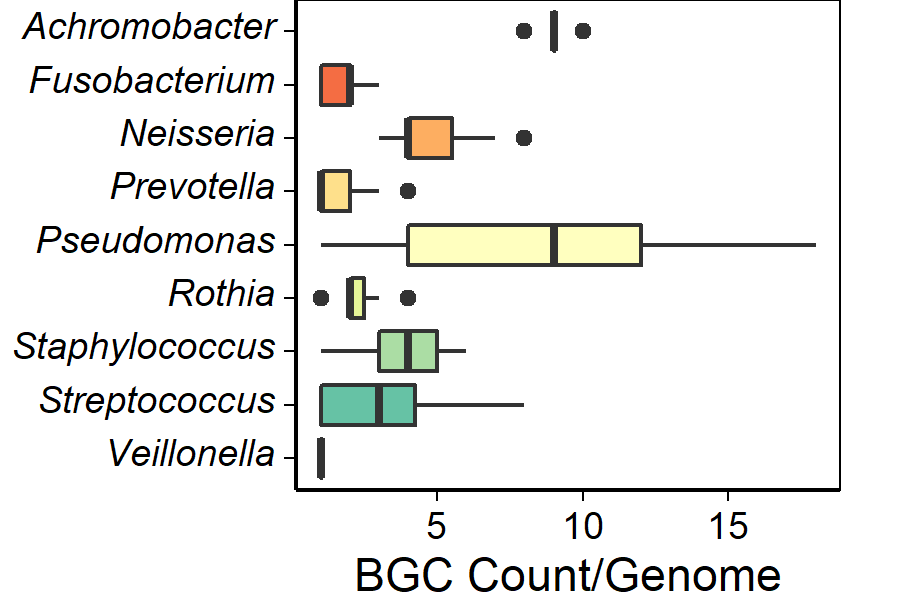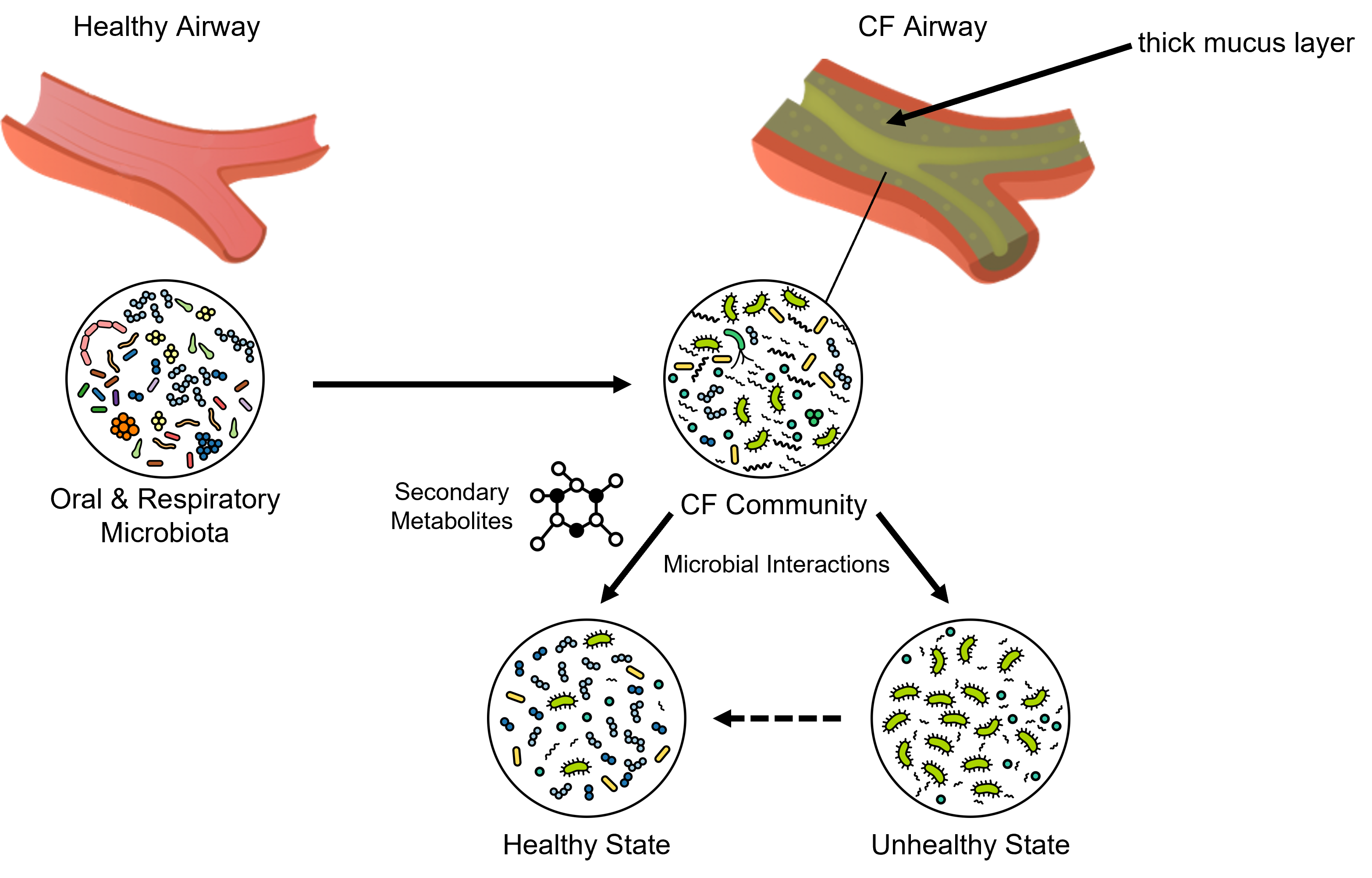
Cystic fibrosis (CF) is a multisystem disease characterized by the production of a thick and viscous mucus that accumulates in the airways, providing a substrate for pathogen colonization, leading to respiratory exacerbation and lung failure.
Though the classic CF pathogen is Pseudomonas aeruginosa, advances in metagenomics and culture technology have revealed that CF mucus is colonized by a polymicrobial community that includes respiratory pathogens, such as Staphylococcus aureus, and anaerobic bacteria from the oral cavity. Microbial interactions are likely responsible for controlling community dynamics within this system. Therefore, understanding how these bacteria interact has potential to improve the prognosis for CF patients. Previous studies investigating interactions among the CF microbiota have focused on P. aeruginosa cultured with other CF pathogens, primarily S. aureus. Recent work has begun to characterize interactions between P. aeruginosa and oral streptococci, but many of the potential interactions among the CF microbiota remain unexplored.
The capacity for secondary metabolite production in the CF airway has been demonstrated for P. aeruginosa, which produces the secondary metabolites pyocyanin and pyoverdine in concentrations between 1-100 μM. In addition to P. aeruginosa and S. aureus, we have determined that other bacteria found in the CF airway have the genomic capacity to produce secondary metabolites.

We hypothesize that members of the CF microbiota produces secondary metabolites during colonization and that these metabolites may influence community dynamics and disease outcome. Our work will inform our understanding of community dynamics within this unique microbiome system and lead to identification of novel therapeutics, including those that influence CF prognosis and may lead to the development of therapeutics to shift an unhealthy microbiome state to a healthy one.

Future studies in the laboratory will focus on identifying and characterizing the secondary metabolites produce by the CF microbiota and determining how they influence microbial interactions in this system.